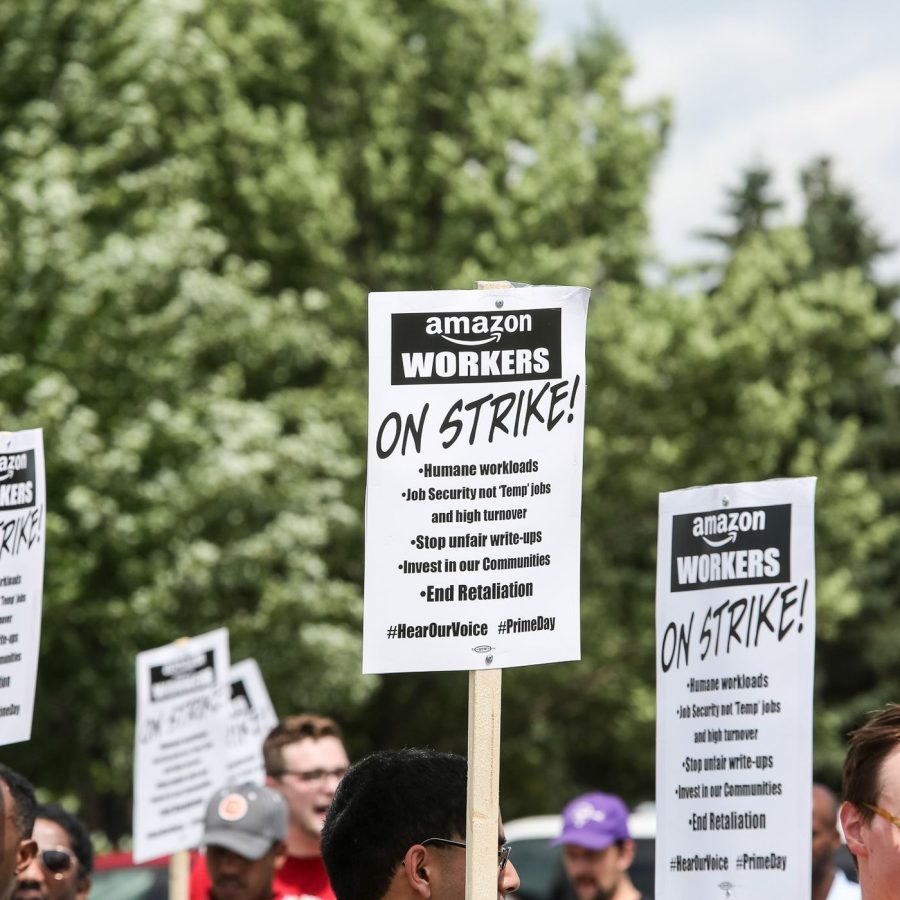Worker strikes flare up across the nation
January 13, 2022
Low-wage worker strikes have swept across the nation in order to advocate for equal workers’ rights.
Worker strikes are a mass refusal by employees to work due to criticism about the workplace, such as poor working environments, low wages and long work hours. The main objective of the strikes is to peacefully come to an agreement with the worker labor union about changing these insufficient conditions. The strikes have been exceptionally prevalent in California, Oregon, New York, Michigan, Nebraska, Pennsylvania and Tennessee and are most common in the medicine, oil, food and entertainment industries.
“We are not machines. We are people that need rest,” Mike Loomer, a set dresser in Hollywood and International Alliance of Theatrical Stage Employees said. “Working in Hollywood is not just wrap parties and red-carpet events. It is a factory job, where we move the factory and set it up every day before we do our shift. The amount of physical labor that is required to make an hour of television … it’s unbelievable to the average person.”
Despite the possible benefits of the desired end goal of low-wage workers, the strikes are proving to be costly. Businesses and companies experience a loss of customers and significantly lower production rates, resulting in decreased income for both sides (according to the “no work, no pay” policy), as well as possible fines. Small businesses and store chains can also be forced into permanent shut down, and corporations can face weighty losses. Furthermore, hostilities and negative emotions are possible on both ends, threatening the productivity and profitability of the economy.
Although there are benefits to rising against current conditions, such as increased pay in the long run, the overall impact of such a notable drop in production can lead to disasters such as food shortages and lack of medical care. The riots have caused a ripple effect in the economy: as the number of employees decreases, the more desperate employers get, causing them to increase wages to gain back lost workers. Additionally, the COVID-19 pandemic has piled on to the already struggling economy by contributing to increased distress about concerns pertaining to unemployment, pay, and the work environment, which are leading to an increasingly tight economy.
“A strike is really the last resort,” Kim Cordova, president of the Colorado Branch of the United Food and Commercial Workers Union said. “That’s labor’s power, a worker’s power is to withhold their labor. A company can function without a CEO, but they can’t function without the workers to actually go do the work.”
Despite the idea that policies can be put in place to improve work conditions, the situation will only be resolved if action is taken by employers. With that in mind, settling the problem is not as simple as it seems, as most employers prioritize personal and business interests rather than those of their employees.
The long-term effects of the strikes can contribute to inflation and essentially alter the economy for workers across the nation. The revolts are not predicted to end in the foreseeable future as employees who have successfully earned better wages spark more strikes and inspire employees who are already on the fence.
“I think workers have reached a tipping point,” Tim Schlittner, communications director of the AFL-CIO said. “For too long they’ve been called essential, but treated as expendable, and workers have decided that enough is enough.”



